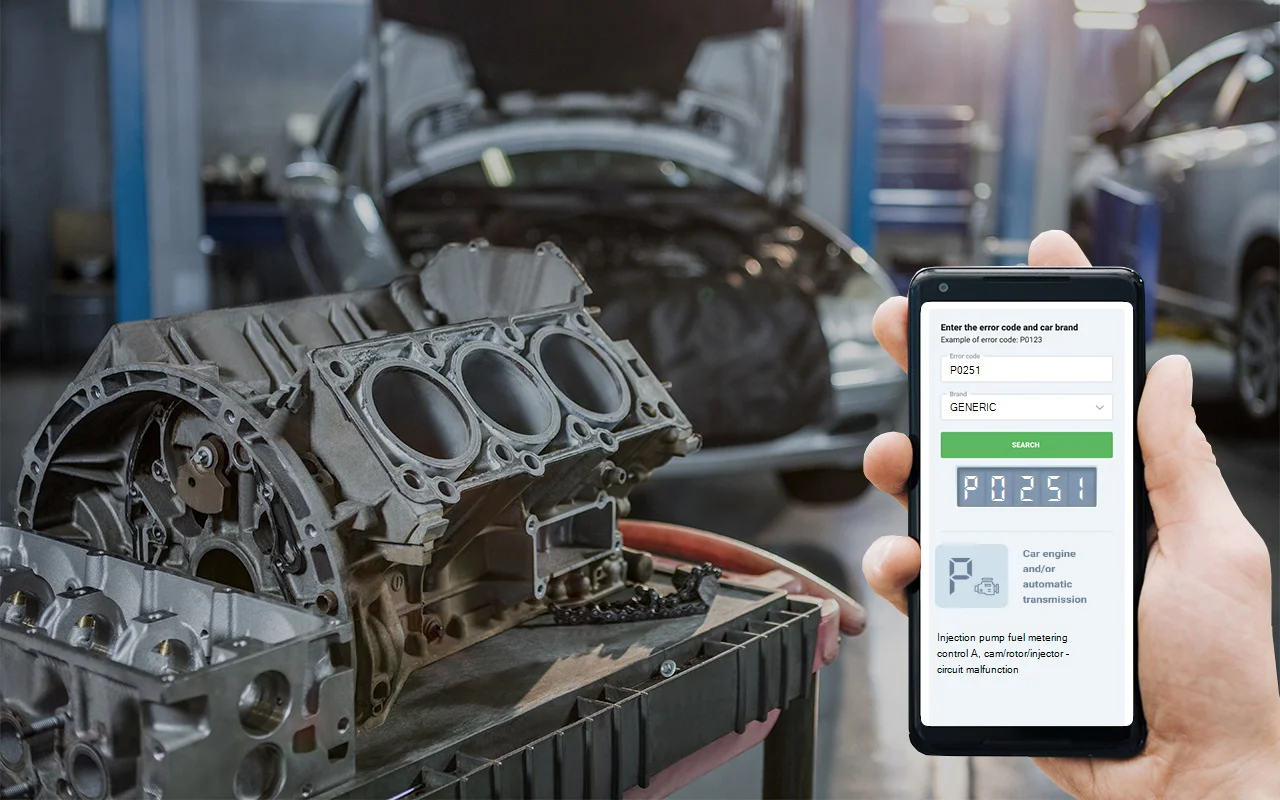Whenever I see the P0251 code pop up, my first thought is always about fuel delivery-because that's exactly what this code is flagging. In plain English, your engine’s computer (the PCM) has picked up on something odd with how fuel is getting to your engine. It's keeping close tabs on the injection pump's fuel metering control circuit 'A.' That’s just a technical way of saying the PCM is monitoring how much diesel fuel your pump is sending, using real-time info from the fuel rail pressure sensor and the fuel control actuator. Diesel engines, in particular, rely on precise fuel metering; even a small hiccup can throw things out of whack. So, when the readings from that rail pressure sensor don’t line up with what the PCM expects during regular operation, you’ll see the P0251 code get set. This isn’t just a warning light-this system directly affects your power, drivability, and fuel economy. Neglect it, and things can spiral fast.
DTC P0251
Causes and dtc P0251
From experience, the most common reasons I see for a p0251 code are:
- A failed fuel control actuator-this little part regulates how much fuel gets sent to the high-pressure pump, and when it goes bad, things get out of balance fast.
- Problems with the fuel rail pressure (FRP) sensor circuit-wiring issues like shorts, opens, or a bad ground can throw the readings way off.
- A malfunctioning FRP sensor itself-if it can’t measure pressure correctly, the PCM gets confused.
- A faulty fuel pump-if the pump can’t deliver the right pressure, the whole system suffers.
- Occasionally, an issue with the PCM, like outdated software, can also be to blame, but that’s less common in my experience.
Most often, it’s one of the first three, so I always start there before moving on to more complex possibilities.
Symptoms and obd2 code P0251
When this code pops up, you’ll usually notice a few things right away. The check engine light will come on-that’s your first clue. But more importantly, you might feel the engine struggling: poor acceleration, a general lack of power, or even stalling when you try to drive. Some folks also see a drop in fuel economy. If you’re noticing any of these, especially combined with the warning light, it’s time to take action.

Diagnosis and P0251 code
Here’s how I tackle a dtc p0251, step by step. First, I always start with the basics-don’t overlook the simple stuff!
- Check the fuel level and quality. Old or contaminated fuel can cause all sorts of headaches.
- Inspect the wiring and connectors around the fuel rail pressure sensor and the fuel control actuator. Look for loose plugs, corrosion, or damaged wires. Sometimes just reseating a connector can clear things up.
- Test the fuel rail pressure sensor itself. Using a scan tool, I compare the sensor’s readings to what’s expected at idle and under load. If the numbers are way off, the sensor might be faulty.
- Check the fuel control actuator for proper operation. This usually means using a scan tool to command it on and off, and watching how the engine responds.
- If everything looks good so far, I’ll move on to testing the fuel pump’s output pressure. Low or erratic pressure points to a failing pump.
- Finally, if all the hardware checks out, I’ll look for PCM software updates or rare internal faults, but that’s usually a last resort.
It’s best to have someone assist you, especially when checking live fuel pressures or working around the engine while it’s running. Safety first!

Common Mistakes with P0251 trouble code
I’ve seen a lot of folks jump straight to replacing the fuel pump or the PCM without checking the wiring or the sensors first. That’s a surefire way to waste money and time. Another common mistake is overlooking simple things like a loose connector or a blown fuse. Always start with the basics before replacing expensive parts. And don’t forget to check for Technical Service Bulletins-sometimes there’s a known issue with a straightforward fix.

Seriousness of obd code P0251
This isn’t something you want to ignore. If the fuel system isn’t working right, you risk stalling in traffic or losing power when you need it most. That’s a serious hazard, especially at highway speeds or in heavy traffic. Plus, running the engine with bad fuel delivery can damage the injectors, the pump, or even the engine itself over time. Things can go south quickly if overlooked, so don’t put this off for later.
Repair options for P0251
Once I’ve pinpointed the issue, here’s what usually fixes a dtc p0251:
- Replace a faulty fuel rail pressure sensor if it’s giving bad readings.
- Repair or replace damaged wiring or connectors in the FRP sensor or fuel control actuator circuits.
- Swap out a failed fuel control actuator if it’s not regulating pressure correctly.
- Install a new fuel pump if the old one can’t keep up with demand.
- Update the PCM software if there’s a known issue or TSB addressing this code.
Always use quality replacement parts and double-check your work before clearing the code and taking the car for a test drive.
Conclusion
To sum it up, P0251 means your vehicle’s computer isn’t happy with how fuel is being delivered to the engine, usually because of a sensor, actuator, or wiring issue. This is a high-priority problem that can lead to poor performance, stalling, or even engine damage if ignored. The most reliable way to fix it is to start with the simple checks-fuel quality, wiring, and sensors-before moving on to bigger repairs like the pump or PCM. Don’t wait on this one; acting quickly will save you headaches and keep you safe on the road.




